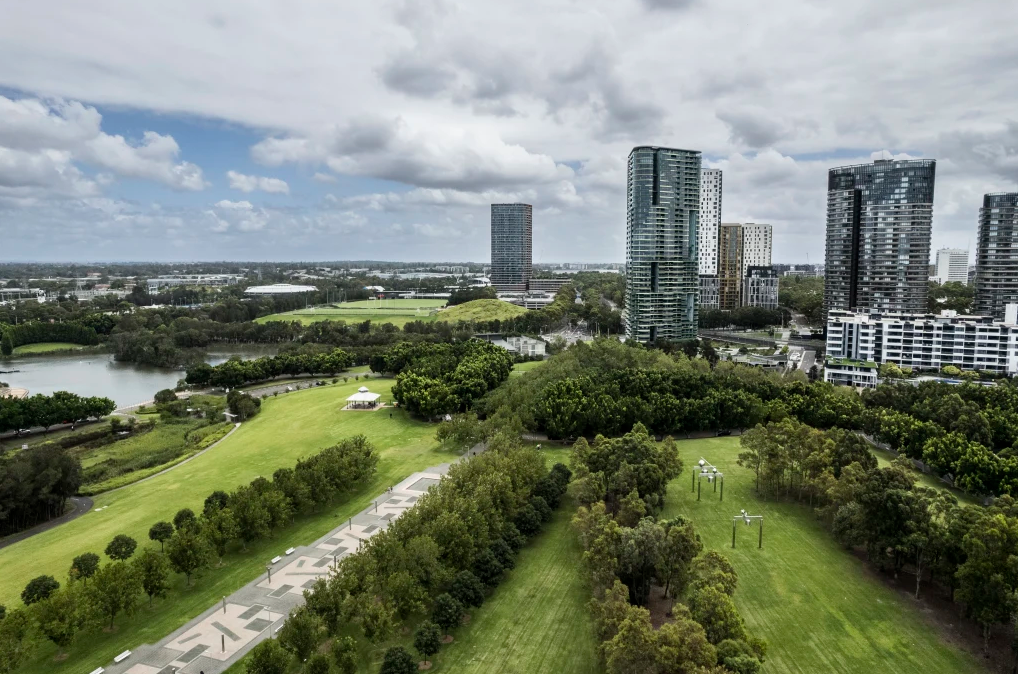CRCWSC tools being used to manage urban heat
A new project at Sydney’s 40 ha Bicentennial Park uses the CRCWSC’s Scenario Tool to model how new technology and recycled water can help reduce urban temperatures.
The Smart Irrigation Management for Parks and Cool Towns (SIMPACT) project uses evapotranspiration – when plants release moisture through their leaves – to cool the park’s microclimate for residents and visitors. Artificial technology will control when and how much water is distributed across the park. Data from a network of more than 250 environmental sensors that monitor soil moisture and air temperature, combined with weather forecasts, will help Sydney Olympic Park Authority to manage the park’s active cooling system.

The project uses the CRCWSC’s Scenario Tool to create a digital twin of the park. Using this smart system, the project team can:
- forecast soil moisture, air temperature and human thermal comfort and then estimate the park’s irrigation demands
- simulate different irrigation scenarios
- train the artificial intelligence model
- produce interactive maps to communicate with the public about the project.
One of the outputs will allow visitors to find the best spot for a picnic or to exercise using their mobile phone.
And as well as cooling the park’s microclimate, the project aims to optimise water use at the park. The project will use only recycled water and aims to cut costs and water consumption by 15% in its first 2 years and by more later.
The project is a collaboration between the NSW Department of Planning, Industry and Environment, Sydney Water, Sydney Olympic Park Authority, Western Sydney University, UTS Institute for Sustainable Futures, Monash University and industry.
You can find out more about the project here.